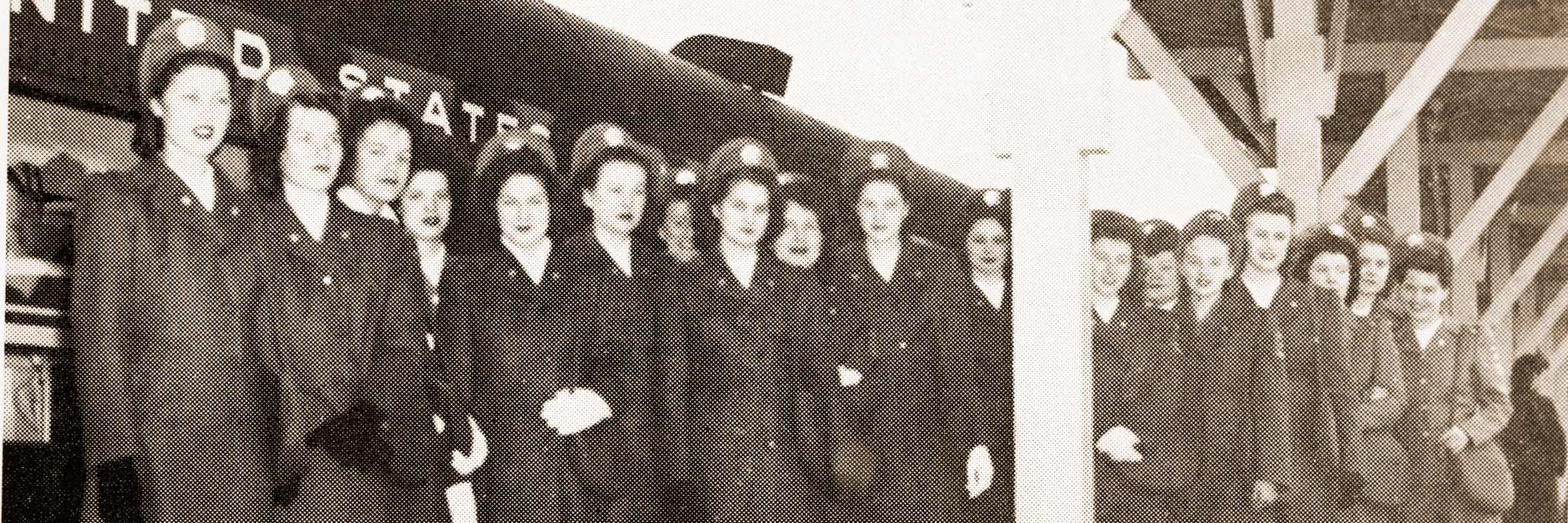





The War Years
Historically wars and other armed conflicts have influenced health care training and innovation. The 20th century's two world wars were no exception. World War I caused an acute shortage of nurses. That same year, the School of Nursing's two-year course of study was extended to three years. Eighteen of our graduates went to serve with the America Red Cross Nursing Service during the Great War.
World War II challenged the strength of already overworked hospital staffs throughout the country and at Roper Hospital. In 1943 the school accepted federal aid from the Cadet Nurse Corps to further the education of nurses in the state and about 95% of the students accepted Cadet Corps funds. As many as eighty-three alumnae left to serve in the armed forces during World War II.
Between the two World Wars, enrollment in the School of Nursing increased, but the course of study was challenging. In 1924 there were 50 students enrolled in the school. There was no secretarial help and all records were kept in long hand. A ten-hour day and twelve-hour night duty, plus classes was the norm. Furthermore, the patient-student ratio was 8:1 during the day and 24:1 at nights. Still, despite this exhausting schedule, by 1935 the enrollment rose to 98 students.
During this period, Ruth Chamberlin was recruited to serve as Educational Director of the College and she would be a formative influence on future events. When she arrived at the School of Nursing in 1937, total class hours were 875 per student. Clinical teaching consisted of morning conferences of about 15 minutes and individual “catch-as-catch-can” conferences lead by head nurses with students at the bedside.